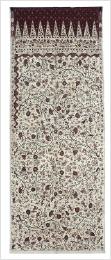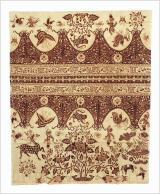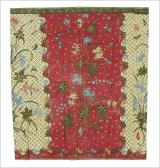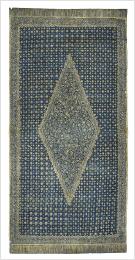Part 2 - Hali fair online
29
29 873 DH 521
Kain panjang, 255 x 106cm, Lasem, first half of 20th century
very good condition, great design and perfect batik tulis
Details zu No. 29
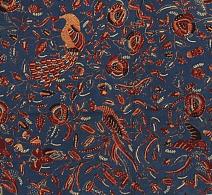
|

|
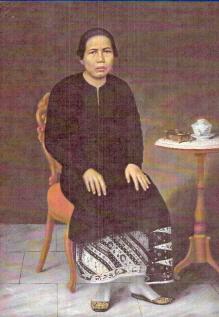
|
_________________________________________________________________
30
30 739 DH
Kain panjang, 275 x 106
Details zu No. 30
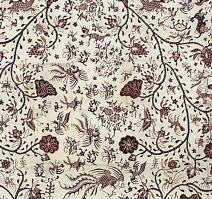
|
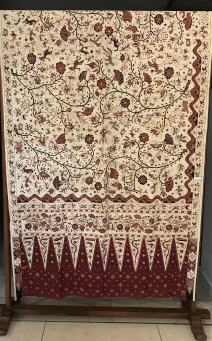
|

|
_________________________________________________________________
31
31 541 DH
Kain panjang, 254 x 107
Hand drawn batik on fine cotton, natural dyes, very good condition. Pasisir area. A rare and unusual design with a dark blue kepala.
Details zu No. 31
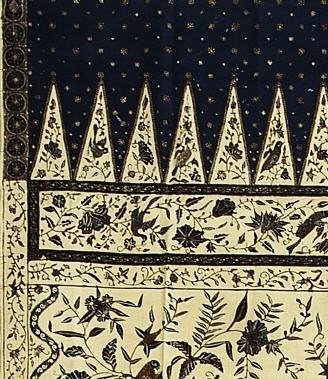
|
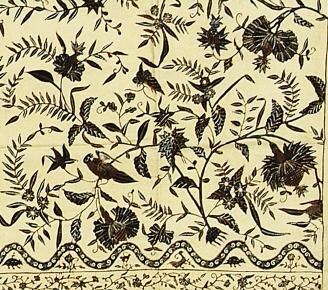
|
_________________________________________________________________
32
32 209 JS
Kain panjang, 272 x 107
Hand drawn batik on fine cotton, natural dyes. This larger type of ‘slendang’, worn over the head and shoulders, was very popular with Malay women in Sumatra. This one was probably made in Lasem for export. Published in `The Book of Batik´ by Fiona Kerlogue, pp.156-157.
Details zu No. 32

|
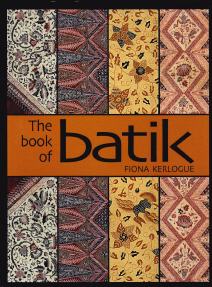
|
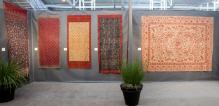
|
_________________________________________________________________
33
33 2018
Breast cloth, 2.50 x 0.53m
Stitch resist dyed (tritik) cotton, natural dyes. The ‘kemben’ is worn to cover a woman´s torso. The batik kemben is a rectangular cloth that is wrapped around the upper part of the body. In the tritik process tightly pulled stitching serves as the resist medium during the dyeing process. From the royal court of Sultan HB VII of Yogyakarta.
First quarter of the 20th century
Details zu No. 33
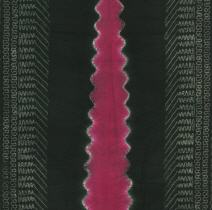
|
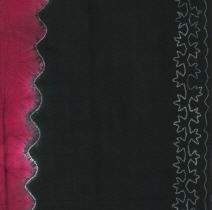
|
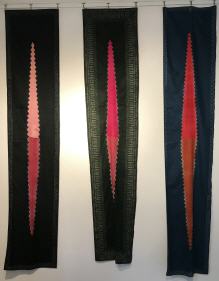
|
_________________________________________________________________
34
34 2017
Breast cloth, 2.53 x 0.51m
Cotton, stitch resist dyed (tritik), natural dyes. The colour of the silk, in this case orange, is eye-catching and attached with very fine stitching following the edges of the tritik design in the diamond. In the past, silk-centered kemben could only be worn by the royal consort, the ‘permaisuri’. Acquired in 1976 from a lady with connections to the royal entourage of the court of Sultan’s Palace (Kraton of Yogyakarta).
Details zu No. 34
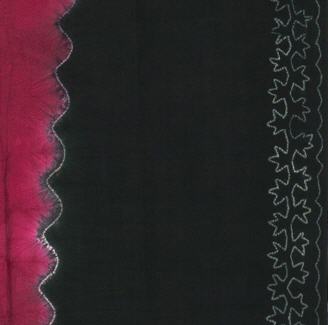
|
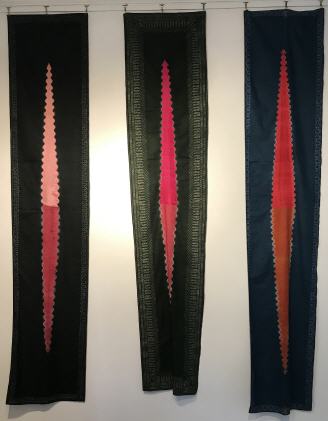
|
_________________________________________________________________
35
35 2016
Breast cloth, 2.51 x 0.51m
Cotton, stitch resist dyed (tritik), natural dyes. The sindangan has been lined with very fine light red silk cloth. Worn at the royal court of Yogyakarta. Acquired in 1976 from a lady with connections to the royal entourage.
Details zu No.35

|

|

|
_________________________________________________________________
36
36 2015
Breast cloth, 2.50 x 0.48m
Cotton, wax drawn by hand, natural dyes, eye catching violet and green silk, sewn by hand. The kemben is worn at ceremonies, mainly by members of the aristocracy in Central Java. From the Yogyakarta Kraton. Acquired in 1976 from a lady with connections to the royal entourage.
Details zu No. 36
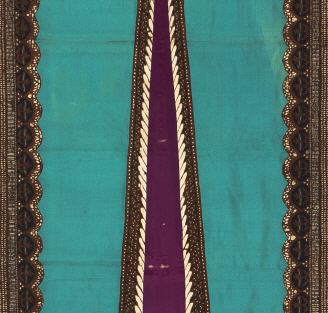
|

|
_________________________________________________________________
37
37 1564
breast cloth, 2.38 x 0.46m
Cotton, wax drawn by hand and also stitch resist dyed, natural dyes, green silk applied, sewn by hand. Acquired from Denindo auction house in Jakarta in 2011. Possibly from the court of the Suhunan of Surakarta (Solo, Central Java).
Details zu No.37
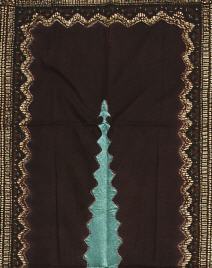
|
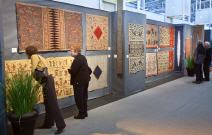
|

|
_________________________________________________________________
38
38 1562
Breast cloth, 2.52 x 0.51m
Cotton, wax drawn by hand, natural dyes, blue and light blue silk sewn by hand. This kemben has an undecorated central field that is recangular in shape; this silk-centre kemben could only be worn by the royal consort, the ‘permaisuri’. Yogyakarta Kraton. Acquired from a lady with connections to the royal entourage.
Details zu No.38

|

|

|
_________________________________________________________________
39
39 2019
Breast cloth, 2.66 x 0.48m
Cotton, wax drawn by hand in combination with the tritik technique, visible in the center along the lozenge and at the inner edges, natural dyes. No silk applied. This type of kemben could be worn by ladies outside of the royal court.
Details zu No. 39
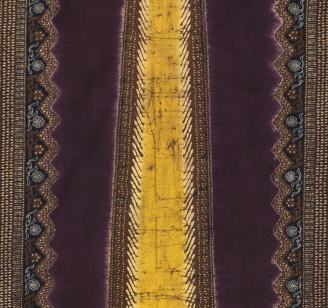
|
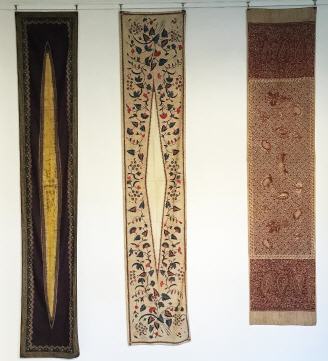
|
_________________________________________________________________
40
40 1842
Decorative hanging, 1.02 x 0.84m
Altar cloth for a Chinese house altar. Very fine batik on cotton, natural dyes, mengkudu red. Manufactured in Lasem for a Chinese client. The motifs include a selection of typical lokcan bird and animal motifs such as the phoenix, the lion and the butterfly. The phoenix was a symbol of the Chinese empress, and by extension the female leader. Published in ‘The Book of Batik’ by Fiona Kerlogue, p.93.
Details zu No.40
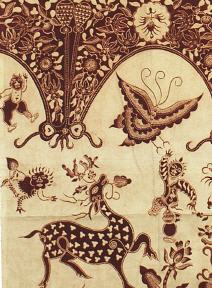
|
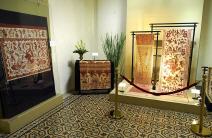
|
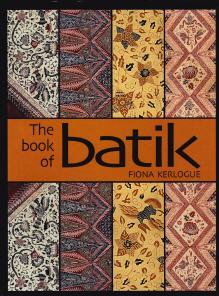
|
_________________________________________________________________
41
41 2217
Sarong signiert L. Metz Pek.
Tulis batik on cotton. Signed ‘L.Metz Pek’. Batik producers of Dutch descent in Pekalongan often drew their inspiration from illustrations in European books. Children’s fairy tales were a popular subject, as in this sarong from the workshop of Mrs. Lien Metzelaar, depicting scenes from ‘The Sleeping Beauty’. With visible repairs owing to the age of around 100 years.
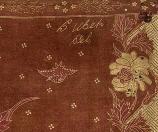
|
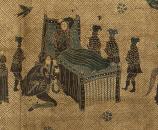
|
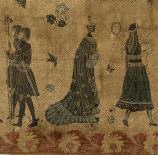
|

|
_________________________________________________________________
42
42 1403
Head cloth, 1,05 x 1,05 cm
Fine cotton, natural dyes (soga brown, mengkudu red). Wax resist technique. Made in Lasem for the South Sumatra market.
Details zu No.42

|
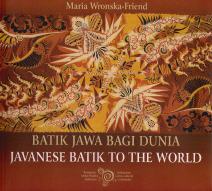
|

|
_________________________________________________________________
43
Batik tulis on cotton, chemical dyes. North coast, Pekalongan. The edges were hand sewn together to form a tubular sarong.
1.04 x 1.90m
Details zu No.43
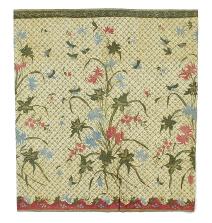
|
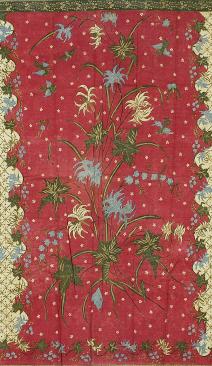
|

|
_________________________________________________________________
44
Ceremonial cloth, selendang bersidang
1.90 x 0.90m
Batik tulis on cotton, indigo blue. Jambi, South Sumatra. In Jambi, selendang with a central lozenge are known as ‘selendang bersidang’. The combination of regular rows of half-drops in the main field with a central lozenge filled with tendrils and leaves is typical, as is the triple border.
Details zu No.44
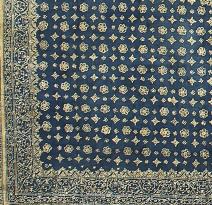
|
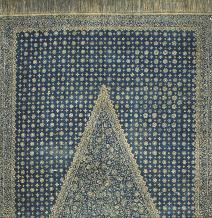
|

|
_________________________________________________________________
45
Batik tulis on cotton with chemical dyes, some repairs. Signed ‘L. Metz Pek’. Made by Mrs. Lien Metzelaar, Pekalongan. Mrs. Lien Metzlar ran a well-known batik workshop in Pekalongan between 1880 and 1919, the heydays of ‘Indische’ or Indo-European batik. Between 1890 and 1900 she produced a series of batik sarongs that combined colours and designs typical of two major batik centres of Java, a warm blue and mengkudu red from the Pesisir area.
2.02 x 1.05m
Details zu No.45

|
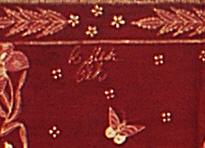
|

|

